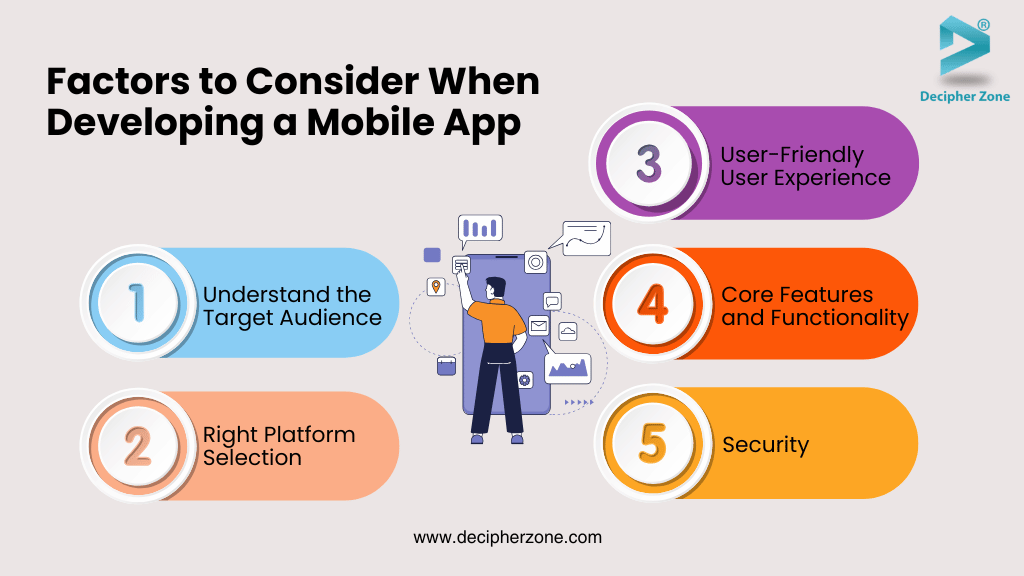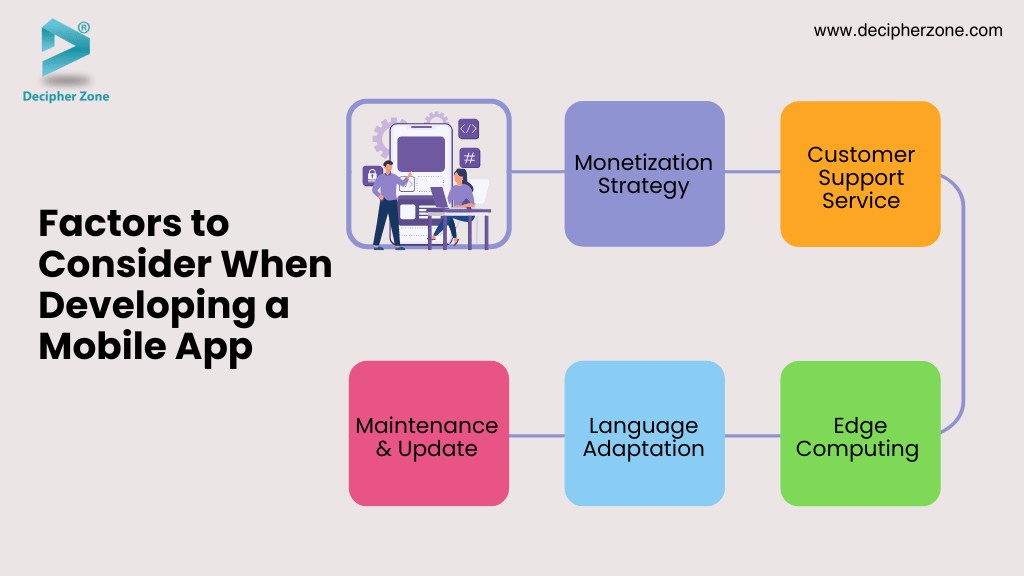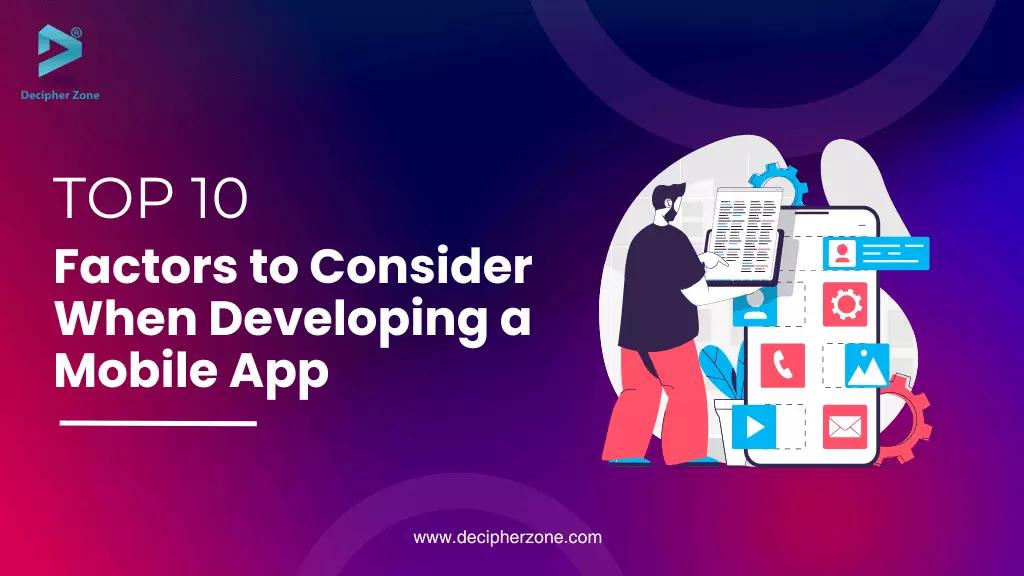As an increasing number of users are relying on mobile applications for everything from shopping to managing their schedules, this dynamic industry continues to flourish. Be a part of this success path, and develop a mobile app that attracts users globally. But before you start, get down to the factors that affect mobile application development to be prepared.
The demand for innovative, user-friendly applications has never been higher, as over 3.8 billion smartphone users exist worldwide. We use mobile apps to shop, connect, work, and even relax. This brings competition to the next level where having a great idea is not enough.
To truly stand out, businesses and entrepreneurs need a carefully planned strategy that takes into account the key factors that drive success. After all, the difference between a mobile application that thrives and one that fades into Nowheresville often lies in the details of its design, functionality, and user experience.
This guide provides detailed insights into essential factors to consider when developing a mobile app. Whether you are an app developer, app builder, or business owner, knowing these factors will help you ensure your product’s success and deliver a mobile application that not only meets user expectations but also leaves a lasting impression.
Top 10 Factors to Consider While Mobile App Development in 2025
When you design a mobile application there are some factors to consider like user experience (UX) making the mobile app easy and enjoyable to use, User interface (UI) to make the mobile app visually appealing and easy to navigate, cross-platform compatibility ensure the app works on different devices and screen sizes, load quickly and run smoothly—also prioritizing accessibility so everyone can use the app.
There is more to the list to make the app development a compelling and user-friendly mobile experience. Let’s explore:
1. Understand the Target Audience
Identification of the target audience is the first stage where different demographics have different application usage behaviors. Understanding these behaviors by conducting extensive research can help in designing an intuitive and user-friendly mobile app.
Having a clear roadmap is essential for saving time and effort while also preparing to tackle upcoming challenges. By conducting this research, you can easily outline your objectives, identify the key features you want to include, understand current market trends, evaluate user expectations, and keep an eye on what your competitors are up to.
Key factors:
-
Are you targeting tech-savvy teens or busy professionals as each group holds a distinct opportunity to engage with their unique digital preferences and needs?
-
The mobile app should be the ultimate remedy for the solutions, providing quick relief and a sense of ease.
-
iOS or Android? This is a significant decision, especially to recognize emerging markets are increasingly showing a preference for one platform over the other.
2. Right Platform Selection
Choosing the right platform for your mobile application can be confusing but skipping this step can lead to problems later on. The roadmap you created can help to pick the most suitable platform, think about features you have selected, who will use it, and the development method (Hybrid or Native).

If you’re looking to target a global audience, it’s a good idea to develop it for both iOS and Android platforms. This allows you to reach more users and meet their different device preferences. Supporting both platforms will make your mobile app accessible to a wider audience and improve their experience.
Key factors:
-
Are you focusing on iOS users or are you aiming to reach a broader audience with Android?
-
Single-platform mobile apps are generally more affordable than cross-platform options and tend to reach wider audiences but come with higher initial development costs.
-
iOS and Android user's expectations are different as iOS users prefer a seamless, premium experience whereas Android users value compatibility, flexibility, and customization.
3. User-Friendly User Experience (UX)
To create a successful and most lovable application, creating a great user experience is crucial. The users are unlikely to return to the application if the spark is missed. Users looking for something that is appealing, smooth, and seamless.
A well-structured application can provide a user-friendly user journey along with a host of other advantages. The final product must ensure superior customer service quality and eliminate poor quality as it can damage the brand’s reputation.
Key factors:
-
Users should be able to jump in within seconds, rather than taking minutes.
-
The mobile app should have intuitive navigation, if users are unable to locate what they are looking for after just a few taps they will leave.
-
Make sure that the mobile application has a responsive design and operates smoothly on all screen sizes.
4. Core Features and Functionality
Based on your research and roadmap of what users want from the mobile app, focus on the main features first. Make these features easy to use and engaging. Once you have effective designs for these core features, you can focus on adding more options for users to explore.
Having fewer features can boost user engagement. The range of features offered can also significantly influence the application’s user base.
To enhance the functionality of the application and ensure user satisfaction, it is crucial to identify and seamlessly integrate essential features. Some basic features include:
-
User signup and login,
-
Notifications capabilities,
-
Options for in-app purchases,
-
Integrating social media platforms,
-
Searching option.
When developing a mobile application it is important not to overload it with too many features right from the start. Instead, focus on the essential functionalities first, then add features based on the user feedback and scaling demand.
5. Security
The information the users provide is an invaluable asset, and it is essential to reassure them that their data will be handled with the utmost care and integrity.
Implementing a robust and secure system designed to safeguard this information, ensuring that it is neither misused nor compromised. By prioritizing their privacy and investing in strong protective measures, you can boost trust and confidence in your commitment to safeguarding their personal data.
Key factors:
-
Make sure sensitive data is encrypted both at rest and in transit.
-
Add an extra layer of security with Multi-Factor Authentication,
-
Keep up with the latest security practices to avoid vulnerabilities with regular security audits.
6. Monetization Strategy
Many businesses struggle from the start to effectively implement their marketing strategies for mobile applications. Generating excitement before the launch can significantly boost your mobile application visibility from the very beginning.
If you are not focusing on how to make it accessible to potential users, building a mobile application for your business holds little to no value.
You have analyzed in the first stage with the help of that roadmap, effective strategies for promotion. Many businesses find online campaigns to be a popular choice, but your marketing approach should largely depend on your specific industry, offerings, and target audience.
Key factors:
-
Offer limited free content and charge for upgrades and additional features like In-App Purchases,
-
Particular charges for content or ongoing services like Subscriptions are the ideal choice for a recurring income model,
-
Non-intrusive ads can generate revenue while enhancing the user experience without interrupting it. With thoughtfully, these well-placed ads can seamlessly blend into the design.
7. Customer Support Service
Strong customer support is required to achieve the long-term success of the mobile application. While the mobile app development process focuses on design, features, and functionality, the post-lunch phase requires ongoing attention to ensure users have a seamless experience.
By offering robust, accessible, and responsive customer support, you can improve user retention and boost the loyal user community.
Prioritizing customer support is essential to build trust, solve problems, and ensure that users can easily get assistance when they encounter issues or have any questions about your mobile application.

Key factors:
-
Provide various platforms to reach out for support like Emails, live chat, phone support, or social media platforms, offering convenient options for their needs.
-
With prompt response times from the customer support team, they can maintain user satisfaction at the time of peak hours.
-
Encourage users to provide feedback through surveys, app reviews, or direct communication. Actively integrating user feedback into the application’s development and updates ensures that the mobile application evolves according to the needs of the users.
8. Maintenance & Updates
Mobile app development doesn’t end with the deployment of the app. Ongoing support and maintenance are essential parts for keeping the mobile application up-to-date, secure, and functioning smoothly.
Keeping you away from the dark if something goes wrong, you can get to it in no time.
Regular updates, bug fixes, and security patches are taken care of to address any issues that may arise. Staying competitive the mobile application should be compatible with the latest version platform of the mobile application.
Key factors:
-
Releasing regular updates includes new features and responses to user feedback.
-
Addressing glitches and errors immediately can provide you with a smooth and seamless user experience and prevent negative reviews.
-
Implement robust security measures to safeguard user data and ensure compliance with evolving security regulations.
-
Utilize the analytics and monitoring tools to track the performance and identify potential issues before they escalate and create a bigger fuss.
9. Language Adaptation
Tailoring your mobile application to various languages, cultures, and regions can benefit and attract users all over the world. Developing a one-size-fits-all approach is no longer sufficient. Users now seek personalized experiences that resonate more on a cultural level.
You can actively achieve that by localizing your mobile application which not only makes it accessible but also creates enjoyable experiences tailored for a global audience.
Consider visual design elements that may appeal to specific demographics and integrate user preferences such as navigation styles or content formats other than translation to embrace the broader perspective of user satisfaction and engagement across diverse markets.
Key factors:
-
Translation into multiple languages and making sure the tone fits the languages selected can go beyond literal translation, increasing user satisfaction.
-
Modify the colors, features, and visuals to ensure they are culturally relevant, recognizing that certain hues, symbols, and imagery can hold different meanings across different cultures.
-
It is essential to adapt the regulations and guidelines according to the region to avoid any potential rule violation as it may vary by region.
10. Edge Computing
If you are developing a mobile application you should consider edge computing, especially in industries like gaming, healthcare, and IoT, where the low-latency and high-performance computing are non-negotiable.
Edge computing users expect real-time responsiveness and seamless performance. It processes data closer to the user’s device rather than relying entirely on centralized servers, unlike traditional cloud-based computing.
Edge computing is an ideal choice for apps that handle large volumes of data or require real-time interactions. It also offers the added advantage of improving data security by processing sensitive information locally or transferring it over the network.
Key factors:
-
Edge computing can reduce latency and ensure faster response times by processing data closer to the user.
-
It can enhance data security by minimizing the risk of data breaches and keeping sensitive data at the edge rather than transferring it to centralized servers.
-
The mobile applications ensure app functionality even during network disruptions by utilizing localized data processing and making it reliable.

Final Thoughts
The opportunity to develop a mobile application is huge and market potential is large. Don’t settle for the average application go for the big one, yes it is risky but considering the factors covered in this blog will guide you to the path of success effectively. Developing a mobile app is tough but if you are considering it.
It is essential to take factors into account including your budget, timeline, features, platforms you want to develop, do you need help with the design, development, or both. It is crucial to evaluate the experience of the company you’re working with and ensure they maintain transparency throughout the development process.
With the right software development partner mobile app development can be less challenging. Decipher Zone is a leading software development company you can rely on for seamless, intuitive, and user-friendly software development.
Our team of experts is committed to providing comprehensive solutions and ensures your application is secure and scalable.
FAQs
-
How much does developing a mobile application cost?
The cost of developing a mobile application can vary from $10,000 to $5,00,000 based on factors such as the complexity of the mobile application, design, features, the development team location, hourly rates, and more.
-
How much time is required to develop a mobile application?
Mobile application development may take up to three to four months and sometimes even a year if a mobile application requires complexity, features, and the size of the development team.
-
What are the factors to consider in mobile app development?
There are many factors to consider when developing a mobile application including understanding the target audience, right platform selection, user-friendly User Experience (UX), core features and functionality, security, and more.

